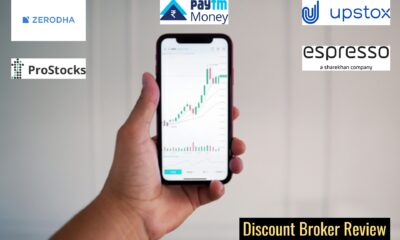IPO
Live IPO Information
Published
2 years agoon
By
Ajit Singh
- IPO Review
- IPO RATING
- CM Rating
- IPO Review 2023, Mainboard IPO Analysis and Notes
- SME IPO Review 2023, IPO Analysis and Notes
- IPO SUBSCRIPTION
- Frequently Asked Question
- SME IPO Subscription Status – Live from BSE SME, NSE Emerge 2023
- IPO LISTING DATE
- IPO ALLOTMENT STATUS
- IPO Allotment FAQs
- BASIS OF ALLOTMENT
- Mainline IPO Basis of Allotment List 2023
- SME IPO Basis of Allotment List 2023
IPO Review
SEBI registered analysts offer comprehensive IPO reviews to retail and HNI investors, providing a thorough analysis of upcoming IPOs. These reviews are supported by data and aim to assist investors in making informed decisions regarding their IPO investments. The analysis includes an evaluation of the IPO’s worthiness, offering recommendations on whether it is advisable to buy the IPO or not.
The IPO reviews delve into various aspects such as the company’s background, details of the offering, valuation, capital structure, financial performance, strengths, risks, benefits of investment, peer comparisons, and overall recommendations. These reviews cater to the needs of both short-term and long-term investors, presenting IPO notes that consider different investment horizons.
IPO RATING
Obtain IPO recommendations from renowned experts and brokerage firms. IPO Reviews 2023 is widely sought after by investors to assist them in making IPO applications. The following IPO ratings are provided by multiple financial institutions, independent brokers, and SEBI registered analysts.
The list of prominent IPO research, reviews, and rating providers in India for 2023 includes Capital Market, ICICI Securities, Nirmal Bang, Motilal Oswal, HEM Securities, Ventura, Reliance Securities, Angel One, Aditya Birla Money, Mr. S P Tulsian, and Mr. Dilip Davda.
CM Rating
The IPO research team at Capital Market (CapitalMarket.com) offers IPO ratings (CM Rating) for a majority of the IPOs. Additionally, they release the New Issue Monitor (NIM) document, which presents investors with a comprehensive analysis of the IPO. This analysis covers various aspects such as the company’s background, strengths, weaknesses, valuation, financials, and ratings.
Rating Scale: 1 – 100 High
IPO Review 2023, Mainboard IPO Analysis and Notes
SEBI Registered Analysts offer comprehensive Mainline IPO reviews to retail and HNI investors, delivering a thorough analysis of the IPO. This analysis is backed by data and assists investors in determining the investment worthiness of the IPO. The reviews also provide IPO recommendations, indicating whether the IPO is a good buy and whether it is considered good or bad.
The IPO views entail a detailed analysis of the company’s background, offer details, company valuation, capital structure, financial performance, strengths, risks, benefits of investment, peer comparisons, and overall recommendations regarding the IPO. These IPO notes are crafted with the interests of both short-term and long-term investors in mind.
SME IPO Review 2023, IPO Analysis and Notes
SEBI Registered Analysts offer comprehensive SME IPO reviews to retail and HNI investors, providing an in-depth analysis of SME IPOs. These analyses are supported by data, aiding investors in determining the investment worthiness of the SME IPO. The reviews also offer recommendations on whether the SME IPO is a good buy and assess whether it is considered good or bad.
The SME IPO views consist of detailed analysis encompassing the company’s background, offer details, company valuation, capital structure, financial performance, strengths, risks, benefits of investment, peer comparisons, and overall recommendations regarding the SME IPO. These SME IPO notes are designed to cater to the needs of both short-term and long-term investors.
IPO SUBSCRIPTION
IPO Subscription refers to the level of investor demand for a public issue of shares listed on the Bombay Stock Exchange (BSE) and the National Stock Exchange (NSE). Investors have the option to place bids for IPO shares through either exchange. Each exchange provides real-time updates on the subscription status of an IPO on their respective websites. At our organization, we publish live subscription data for current IPOs, as well as the final bidding details for all IPOs since 2006.
When a privately held company decides to go public, it offers its shares through an Initial Public Offering (IPO) to raise funds and get listed on stock exchanges. During an IPO, the company receives bids from investors for the offered shares. In many cases, the number of bids received exceeds the number of shares available, resulting in oversubscription.
IPO live subscription for the year 2023 holds significant importance for investors due to the following reasons:
- It indicates the level of demand for the shares, with higher demand often leading to better listing gains.
- Investors choose their category (Retail or HNI) based on the subscription figure.
- Some IPO investors consider IPO funding options based on the IPO subscription status at BSE and NSE.
- Movements in the IPO Grey Market rates are influenced by the IPO Subscription Data.
- The latest IPO subscription status for 2023, provided below, includes the combined subscription figures from both BSE and NSE.
Note:
- Click on the company name for the day to day subscription detail.
- Report default sorted by IPO closing date.
- IPO Investor Category
- RII – Retail Individual Investor
- NII – Non-institutional bidders
- QIB – Qualified Institutional Bidders
- Employee
- Others(i.e. Shareholders)
Frequently Asked Question
How do I know how many times an IPO will get oversubscribed?
Predicting the subscription level of an IPO is a complex task due to various factors at play. The subscription level is influenced by factors such as the fundamentals of the issuer company, issue size, issue price, grey market premium, and overall market conditions. Analysts may attempt to estimate the cost of HNI IPO shares by predicting the level of IPO oversubscription before the IPO closes. However, these predictions tend to change frequently until the last minute.
In general, good IPOs often experience substantial oversubscription, ranging from 300 to 1000 times in the NII (HNI) category and 15 to 30 times in the retail category, measured by application. The level of oversubscription also depends on the demand observed in the grey market. When an IPO garners high demand in the grey market, it usually results in a higher level of oversubscription. It is challenging to derive the expected oversubscription of an IPO solely based on historical data, as there are numerous variables involved in the process.
SME IPO Subscription Status – Live from BSE SME, NSE Emerge 2023
IPO LISTING DATE
The IPO listing date signifies the day when a new IPO is officially listed and begins trading on the National Stock Exchange (NSE) and Bombay Stock Exchange (BSE) (Mainboard IPO). It is the date when IPO shares become available for trading in the stock market. The listing price of the IPO is determined based on the dynamics of demand and supply for the company’s shares, making it challenging to predict the exact IPO listing price.
Stock exchanges in India release a listing notice that provides information about the IPO’s listing date and other relevant details regarding the listing of IPO shares.
The IPO listing time at both BSE and NSE follows a specific schedule:
- 9:00 AM to 9:45 AM – Pre-open Trading Session
- 9:45 AM to 10:00 AM – Price Discovery
- 10:00 AM onwards – Normal Trading
During the pre-open trading session, which lasts for 45 minutes, market participants can enter, modify, and cancel orders for IPO shares. However, no actual executions occur during this session. The IPO listing price is discovered in the 15-minute price discovery period following the pre-open session, and pre-open orders are executed accordingly. After this, normal trading commences.
At our organization, we provide information on new IPO listings, including IPO listing dates, circuit details for the listing day, and an IPO listing calendar. You can also check the recent IPO listings and their corresponding listing prices, along with the latest updates on IPO listings.
The SME IPO listing date refers to the specific day when a new SME IPO is officially listed and begins trading on the NSE Emerge and BSE SME exchange. It is on this day that SME IPO shares become available for trading in the open market. Investors can purchase shares of the listed SME company from the market. The listing price of SME IPO shares is determined by the interplay of demand and supply in the market, making it difficult to predict SME IPO listing gains.
The stock exchanges, NSE Emerge and BSE SME, release a notice or circular containing information about the upcoming SME IPO listing status. This notice includes the date and other relevant details regarding the listing of the SME company.
The SME IPO listing time follows a specific schedule:
- 9:00 AM to 9:45 AM – Pre-open Trading Session
- 9:45 AM to 10:00 AM – Price Discovery
- 10:00 AM onwards – Normal Trading
Similar to mainboard IPOs, both exchanges hold a pre-open trading session for SME IPO shares on the listing day. During this session, investors can enter, modify, and cancel orders for SME IPO shares. However, no actual executions take place during this session. The SME IPO listing price is discovered during the 15-minute price discovery period following the pre-open session, and orders from the pre-open session are executed accordingly. Normal trading commences immediately thereafter.
At our organization, we provide information about SME IPO listings, including lists, history, pricing, and the listing process. You can check the recent SME IPOs and their corresponding listing prices, as well as stay updated with the latest SME IPO listing information.
IPO ALLOTMENT STATUS
The IPO allotment status provides detailed information regarding the number of shares allocated to an investor in an Initial Public Offering (IPO). The process of IPO allotment is conducted by the registrar appointed for the IPO. The IPO allotment date is when the allotment status is publicly announced on the registrar’s website.
The registrar publishes the IPO allotment calculation in the Basis of Allotment document. Once the allotment is finalized, investors can check their IPO allotment status by visiting the registrar’s website (such as Linkintime, Karvy).
Additionally, IPO investors are notified about the new IPO allotment status through email and SMS by various entities such as BSE, NSE, CDSL, and NSDL. These notifications ensure that investors are informed about their IPO allotment and can access the relevant details promptly.
IPO Allotment FAQs
What is IPO Allotment Status?
Shares are allocated to retail investors in an IPO through a lottery in case of oversubscription of IPO. Online IPO allotments status offers detail about the number of shares applied and allocated to the investor in an IPO.
How to check IPO allotment status?
The allotment status is available online on the registrar’s website. An investor can check allotment status by entering PAN Number or the IPO allocation number.
Registrar of the IPO also publishes a basis of allotment document. This document provides detail about the number of applications received and how the allotments are done.
Where to check IPO allotment status?
IPO investors can check the IPO allotment status on the website of IPO registrar.
Each IPO has a designed registrar i.e. Linkintime, Karvy. Register of an IPO is a financial institution registered with stock exchanges and SEBI. Registrars keep the records of the issue and ownership of the company shares. The registrar is responsible for allotment of shares to investors in an IPO, process refund, and transfer allocated shares to investors demat account.
When is IPO allotment status?
IPO allotment status is available online within one week of the public issue closing date. The allotment is announced by the registrar of the IPO.
BASIS OF ALLOTMENT
IPO Basis of Allotment is a document published by the registrar of an IPO after finalizing the share allocation based on regulatory guidelines. This document provides information about the demand of the IPO stock.
The IPO allotment information is categorized by the number of shares applied by investors. For each such category detail bidding information is provided in this document including the number of valid application received, the total number of share applied, the ratio of the allotment and number of shares allocated to the applicants.
Ratio of the allotment is a critical factor for IPO’s oversubscribed multiple times. This field tells how many applicants will receive a single lot of shares among a certain number of applicants. For example, ratio 1:8 means only one out of eight applicants received one lot of shares; ratio value ‘FIRM’ means all the applicants are eligible to receive a certain amount of share.
Mainline IPO Basis of Allotment List 2023
The IPO Basis of Allotment is an official document released by the registrar of an IPO once the share allocation process is finalized according to regulatory guidelines. This document serves as a comprehensive source of information regarding the demand for the IPO stock.
The information in the IPO Basis of Allotment is organized based on the number of shares applied for by investors. Within each category, detailed bidding information is provided, including the number of valid applications received, the total number of shares applied for, the allotment ratio, and the number of shares allocated to individual applicants.
The allotment ratio is a crucial factor, particularly when an IPO is oversubscribed multiple times. This field indicates how many applicants will receive a single lot of shares among a certain number of applicants. For instance, a ratio of 1:8 signifies that only one out of every eight applicants will receive one lot of shares. On the other hand, a ratio value of ‘FIRM’ implies that all applicants are eligible to receive a specific amount of shares without any proportionate reduction.
SME IPO Basis of Allotment List 2023
Obtain the compilation of SME IPO Basis of Allotment. The SME IPO Basis of Allotment document provides comprehensive details about how the allocation of SME IPO shares is carried out for investors in each category, such as retail and non-retail.
In an SME IPO, the allocation of shares to investors is determined based on specific criteria established by regulators and disclosed in the Red Herring Prospectus (RHP) documents. The Basis of Allotment (BOA) document serves as a representation of the demand for the IPO shares among the public.
The BOA document is prepared by the registrar of the IPO and serves as the basis for the allocation of IPO shares. This document is valuable for understanding the share allocation process in an IPO. It provides answers to questions such as:
- Why didn’t I get an IPO allotment?
- Why don’t I get an IPO?
- How to confirm IPO allotment?
- What happens when the IPO is oversubscribed in India?

Stay informed about the happenings in India’s primary stock markets (IPO) by utilizing a user-friendly calendar view. The IPO Calendar offers a comprehensive schedule and timeline of current and upcoming IPOs, allowing you to keep track of the IPOs. Easily locate the IPOs that are opening today. The calendar below displays the IPO activity in June 2023, organized by dates. Simply click on the event name to access further details and information.
SME IPO CALENDAR
Stay updated with the events taking place in India’s primary SME stock markets (SME IPOs) by utilizing a user-friendly calendar view. The SME IPO Calendar offers comprehensive and easily accessible information to help you keep track of SME IPOs. Below, you will find a calendar displaying the SME IPO activity in June 2023, organized by dates. Simply click on the event name to obtain further information and details.
Note:
- Stock splits are adjusted in Issue Prices.
- Bonuses, dividends or other actions are not considered while calculating ‘Profit / Loss’.
- Records on this page are default sorted by IPO list date.
- Please visit BSE / NSE websites for current stock quotes & charts.
- Information on this page was last updated on 6/16/2023 4 PM.

The IPO Grey Market serves as an over-the-counter market where transactions occur solely through in-person interactions among a trusted group of investors. Typically, brokers in the local vicinity facilitate these deals. In this market, investors have the opportunity to sell IPO shares or IPO applications before the company becomes listed on the stock exchange.
The IPO Grey Market Premium (IPO GMP) refers to the additional amount at which IPO shares are traded within the grey market. The Kostak Rate represents the rate at which an investor can sell the IPO application at a fixed price, regardless of whether they receive an IPO allotment or not.
Please note: This page functions as a discussion forum. The messages reflect the opinions of the individual message authors. We do not actively monitor the content of posted messages on this forum. We are not responsible for the accuracy, completeness, or usefulness of any posted message. We do not endorse or guarantee the contents of any messages posted.
GREY MARKET FAQs
We invite you to provide feedback and suggestions to enhance the quality of answers to the questions in this category. Your comments are valuable to us, and we encourage you to share them. We highly appreciate your involvement in developing this page as a reliable source of simple, easily understandable, relevant, and accurate information for the Indian Investor Community.
What is the IPO Grey Market?
The IPO Grey Market refers to the unofficial market where shares of an upcoming initial public offering (IPO) are bought and sold before they are officially listed on the stock exchange. It is an over-the-counter market where investors trade IPO shares without the involvement of the stock exchange.
Who decides the grey market price?
Grey market prices are determined by market participants, typically high net worth individuals (HNIs) or institutional investors, who are willing to buy or sell shares in the grey market. These prices are influenced by factors such as demand, supply, investor sentiment, and market speculation.
How can I buy and sell in Grey market?
To participate in the grey market, you typically need to approach a grey market dealer or a person who acts as an intermediary between buyers and sellers. They facilitate the buying and selling of shares in the grey market. Transactions in the grey market are usually conducted in cash or through off-market transfers.
How does the Grey Market work?
The grey market operates as an informal market where buyers and sellers agree on prices for shares of an IPO that is yet to be officially listed. Investors who anticipate a high demand for the IPO shares may buy them in the grey market at a premium, with the hope of selling them at a higher price when the shares are listed on the stock exchange.
Is the Grey Market driven by any legal authority?
The grey market is not regulated by any legal authority or overseen by stock exchanges. It operates outside the purview of regulatory bodies, such as securities commissions or financial authorities. The trades in the grey market are essentially informal agreements between buyers and sellers.
How come the grey market prices change every day?
Grey market prices can change daily due to various factors. Investor sentiment, demand-supply dynamics, news related to the IPO, and market conditions can all influence the perceived value of the IPO shares. As new information becomes available, the expectations and perceptions of investors may change, leading to fluctuations in grey market prices.
Should IPO investors consider Grey Market Premium before applying in an IPO?
The decision to consider the Grey Market Premium (GMP) before applying for an IPO is subjective and depends on individual investors. The GMP reflects market sentiment and investor expectations, which may or may not align with the actual performance of the stock post-listing. It’s important to conduct thorough research and analysis of the company’s fundamentals before making an investment decision.
Can we sell the stock allotted to us in an IPO before the stock gets listed?
In most cases, you cannot sell the stock allotted to you in an IPO before it gets listed on the stock exchange. IPO shares are typically subject to a lock-in period, during which you are not allowed to sell or transfer the shares. The lock-in period is usually a few months, and it varies based on the regulations and terms set by the company and regulatory authorities.
When a stock is not listed, how does the broker execute orders for preferred customers in the grey market?
In the grey market, brokers usually facilitate off-market transactions between buyers and sellers. They may have preferred customers who are willing to buy or sell IPO shares before listing. The broker acts as an intermediary, matching the buy and sell orders from these preferred customers and executing the transactions outside the stock exchange.
From where can I know the present rates of premium on a share in the IPO grey market?
Grey market rates are typically not available on public platforms or official sources. You can try to get information about grey market rates from individual grey market dealers or through informal networks of investors who actively participate in the grey market. However, it’s important to note that grey market trading is unofficial and carries inherent risks.
What is Kostak in the Grey Market?
Kostak is a term used in the grey market to refer to the price at which an investor can sell their IPO application before the listing of the IPO shares. It represents the premium or profit an investor can earn by selling their IPO application. Kostak rates are typically lower than the grey market premium.
Do I have to pay taxes when I sell an application in the grey market?
Taxation on transactions in the grey market may vary based on the tax laws of your jurisdiction. It is advisable to consult with a tax professional or seek guidance from relevant tax authorities to determine the tax implications of selling applications in the grey market and comply with applicable tax regulations.
Who pays the brokerage when selling shares on the listing day in a grey market transaction?
In a grey market transaction, the buyer and seller negotiate the price directly, without the involvement of a stockbroker. Therefore, there is typically no brokerage fee or commission paid in the grey market. The buyer and seller agree on a price, and the transaction is settled between them.
How does the Grey Market work in the stock market?
Grey market activities are not part of the official stock market. It is an informal market where IPO shares are traded before listing. Market participants speculate on the future performance of the IPO shares and buy or sell them based on their expectations. Grey market trading operates independently of the stock market’s rules, regulations, and supervision.
What is Grey Market Premium?
Grey Market Premium (GMP) is the difference between the grey market price of an IPO share and its issue price. It represents the premium or discount at which IPO shares are being traded in the grey market. GMP is an indicator of investor sentiment and expectations regarding the future performance of the IPO.
What are Kostak Rates in the IPO Grey Market?
Kostak rates, also known as application rates, are the prices at which IPO applicants can sell their IPO application before the listing of the shares. It represents the premium or profit an investor can earn by selling their application. Kostak rates are usually lower than the grey market premium.
What is ‘Subject to Sauda’ in the IPO Grey Market?
‘Subject to Sauda’ is a term used in the grey market to indicate that a deal is subject to final confirmation. It means that the buyer and seller have agreed on a price, but the transaction is contingent upon the confirmation of the shares’ allocation in the IPO. Until the shares are officially allocated, the deal is not considered final.
Is Grey Market Kostak different from ‘Subject to Sauda’?
Yes, Grey Market Kostak and ‘Subject to Sauda’ are different terms used in the IPO grey market. Kostak refers to the price at which IPO applications can be sold, while ‘Subject to Sauda’ refers to a deal that is subject to confirmation of share allocation. Kostak rates indicate the premium for selling applications, whereas ‘Subject to Sauda’ relates to the confirmation of a transaction.
How do I find IPO Grey Market dealers?
Finding IPO Grey Market dealers can be challenging as they operate in an informal and unregulated market. You can try reaching out to individuals or networks involved in IPO investing or consult with investment professionals who may have connections to grey market dealers. It’s important to exercise caution and conduct due diligence when dealing with grey market participants, as it involves inherent risks and may be illegal in certain jurisdictions.

Are you curious about how companies go from being privately held to publicly traded? Do you wonder what an IPO is and what it involves? If so, you’re in the right place. Here, we will provide an overview of the IPO process, including what it is, why companies go public, and how the process works.
An IPO is a major event for a private company, and it involves a lot of careful planning, preparation, and execution. For investors, it can be an exciting opportunity to invest in a promising company at an early stage of its growth. But it also comes with significant risks, and understanding the process is crucial for making informed investment decisions.
So, whether you’re an entrepreneur considering taking your company public or an investor looking to learn more about the IPO process, we will provide you with the essential information you need. Let’s dive in!
What’s an IPO?
An initial public offering, commonly known as an IPO, is a significant event in the life of a private company. An IPO is the process of offering shares of a private company to the public for the first time, thereby allowing it to be publicly traded on a stock exchange. It is a significant milestone in the company’s growth trajectory, and one that is closely watched by investors, analysts, and the media.
An initial public offering, or IPO for short, is a significant event that marks a private company’s transition into a publicly traded company. In other words, it is the first time that a private company issues its shares to the public in exchange for capital, allowing anyone to buy and sell the company’s stock on a stock exchange.
The IPO process involves several steps:
- First, the company must decide to go public and engage the services of investment bankers to lead the IPO process. The investment bankers help the company prepare the necessary documentation and disclosures, including a prospectus that outlines the company’s business model, financial performance, and growth prospects. The prospectus also contains information about the risks associated with investing in the company.
- The next step is the roadshow, where the company’s management team and investment bankers meet with potential investors to market the IPO. The roadshow typically includes presentations, meetings, and discussions with institutional investors such as mutual funds, pension funds, and hedge funds, as well as with individual retail investors.
- Once the roadshow is complete, the company sets the IPO price, which is the price at which the shares will be sold to investors. The IPO price is based on a variety of factors, including the company’s financial performance, growth prospects, market conditions, and investor demand.
- On the day of the IPO, the shares are offered to the public for the first time. The shares are typically sold through an underwriting process, where the investment bankers purchase the shares from the company and then sell them to investors. The underwriters earn a commission on the shares they sell.
- After the IPO, the company’s shares begin trading on a stock exchange. The first day of trading is usually marked by significant media attention and market volatility as investors react to the IPO price and the company’s prospects. The company’s management team also faces increased scrutiny from analysts and investors as they seek to deliver on the promises made during the IPO process.
The primary purpose of an IPO is to raise capital for the company’s growth and expansion. Going public can help a company attract a larger pool of investors and increase its visibility and credibility in the market. This can lead to greater access to financing and more significant opportunities for growth and expansion.
In addition to raising capital, an IPO can also provide a way for early investors, founders, and employees to cash out their shares and realize a return on their investment. Going public can also create a more liquid market for the company’s shares, allowing investors to buy and sell shares with greater ease.
However, going public also comes with significant risks and responsibilities. Publicly traded companies are subject to greater regulatory and reporting requirements, which can be costly and time-consuming. Public companies also face increased scrutiny from investors, analysts, and the media, which can lead to greater volatility in the stock price and pressure to meet earnings expectations.
In conclusion, an IPO is a significant event for a private company that involves issuing shares to the public for the first time. It can be a powerful tool for raising capital, increasing visibility and credibility, and providing liquidity to early investors. However, it also comes with significant risks and responsibilities, and companies must carefully consider the benefits and drawbacks of going public before making this important decision.
Advantages of IPO:
- Access to capital: An IPO allows a company to raise significant capital by issuing shares to the public, which can be used to fund growth and expansion.
- Increased visibility and credibility: Going public can enhance a company’s visibility and credibility in the market, which can help attract new customers, partners, and employees.
- Liquidity for shareholders: An IPO provides a way for early investors, founders, and employees to sell their shares and realize a return on their investment.
- Improved access to financing: Public companies have access to a wider range of financing options, including debt financing and secondary offerings of shares.
- Enhanced shareholder value: Going public can lead to increased demand for the company’s shares, which can drive up the stock price and create value for shareholders.
- Increased employee motivation: An IPO can create a sense of ownership and pride among employees, which can increase motivation and retention.
- Exit strategy for founders: An IPO provides an exit strategy for founders and early investors, allowing them to sell their shares and move on to new ventures.
Overall, an IPO can be a powerful tool for companies looking to raise capital, increase visibility, and create value for shareholders. However, it also comes with significant risks and responsibilities, and companies must carefully consider the benefits and drawbacks before making this important decision.
Disadvantages of IPO:
- Cost and complexity: Going public can be costly and time-consuming, involving significant legal, accounting, and regulatory expenses.
- Increased regulatory requirements: Public companies are subject to greater regulatory requirements, including financial reporting, disclosure, and compliance, which can be onerous and expensive.
- Public scrutiny and pressure: Public companies are subject to increased scrutiny from investors, analysts, and the media, which can create pressure to meet earnings expectations and lead to increased volatility in the stock price.
- Loss of control: Going public can dilute the ownership and control of the company, as new investors and shareholders become involved in decision-making.
- Short-term focus: Public companies may be pressured to focus on short-term results and earnings, rather than long-term growth and value creation.
- Legal liabilities: Public companies are subject to greater legal liabilities, including potential lawsuits from shareholders and regulators.
- Competitive disclosure: Public companies are required to disclose significant amounts of information about their business, which can be used by competitors to gain a competitive advantage.
Overall, going public can be a significant decision for companies, involving significant risks and costs. Companies must carefully weigh the benefits and drawbacks before making this decision, and ensure that they are adequately prepared to manage the complexities and responsibilities of being a public company.
Initial Public Offerings (IPOs) can be a powerful tool for companies looking to raise capital, increase visibility, and create value for shareholders. However, they also come with significant risks and responsibilities that must be carefully considered before making the decision to go public. Additionally, there are different types of IPOs, each with its own unique benefits and drawbacks. Let’s take a closer look at how the advantages and disadvantages of an IPO can be interlinked to different types of IPOs.
Types of IPO
An Initial Public Offering (IPO) is a significant milestone for a company, marking its transition from a privately-held entity to a publicly traded company. There are different types of IPOs that companies can undertake to go public, each with its own unique advantages and disadvantages. In here, we’ll explore the different types of IPOs in detail.
1. Traditional IPOs :
Traditional IPOs are the most common type of IPO. In a traditional IPO, a company hires an investment bank or underwriter to help it issue and sell shares to the public for the first time. The underwriter acts as a middleman between the company and the public markets, helping the company set the price of the shares and find buyers for the shares.
- Advantages :
- Offers access to a wide spectrum of investors
- Generates publicity and media attention
- Raises significant capital for the company
- Disadvantages :
- Can be costly and time-consuming
- Involves significant legal and regulatory requirements
- Requires a well-established track record and financial history
2. Direct Listing :
Direct Listings are a newer type of IPO that have become increasingly popular in recent years. In a Direct Listing, the company does not raise capital by issuing new shares. Instead, existing shares are sold directly to the public without the help of underwriters.
- Advantages :
- More flexible and cost-effective than traditional IPOs
- Permits pre-existing shareholders to sell their pre-owned shares directly to the public
- Does not involve dilution of ownership or control of the company
- Disadvantages :
- Limited access to capital
- No underwriter to help set the price of the shares or find buyers
- Requires a well-established brand and a significant amount of public interest
3. SPACs :
Special Purpose Acquisition Companies (SPACs) are another type of IPO that have gained popularity in recent years. In a SPAC, a company is formed for the sole purpose of raising capital through an IPO, with the intention of acquiring another company or companies at a later date.
- Advantages :
- Allows companies to go public more quickly than traditional IPOs
- Provides access to capital without the need for an established financial history
- Can provide a potential exit strategy for existing shareholders
- Disadvantages :
- Can be risky for investors, as the company being acquired may not be well-established or profitable
- Involves a high level of regulatory scrutiny
- Can be costly and time-consuming
In conclusion, each type of IPO has its own unique advantages and disadvantages. Companies must carefully consider their goals and financial situation before deciding which type of IPO is right for them. Traditional IPOs provide access to a wide range of investors and generate significant publicity, but can be costly and time-consuming. Direct Listings are more flexible and cost-effective, but require a well-established brand and public interest. SPACs allow companies to go public quickly without an established financial history, but involve a high level of regulatory scrutiny and potential risk for investors.
When a company decides to go public, it can offer its shares to investors through two different methods: fixed price offerings and book building offerings. Let’s take a closer look at each method and how they differ from one another.
Fixed Price Offerings:
In a fixed price offering, the company sets a specific price for its shares before the IPO takes place. This price remains fixed throughout the IPO process, and investors can purchase shares at this fixed price. This method is simpler and more straightforward than book building, as investors know exactly how much they will pay for each share.
- Advantages:
- Simpler and easier to understand for investors
- Provides a clear and predetermined price for the shares
- Reduces uncertainty for both the company and investors
- Disadvantages:
- May not accurately reflect the true market value of the shares
- May result in underpricing or overpricing of the shares
- May limit the amount of capital the company can raise
Book Building Offerings:
In a book building offering, the company does not set a fixed price for its shares before the IPO takes place. Instead, the company and its underwriters gauge demand for the shares by soliciting bids from potential investors. Based on these bids, the underwriters can determine the market demand for the shares and set a price range for the IPO. Investors can then submit bids for the shares within this price range, and the final price of the shares is determined based on the bids received. This method is more complex and requires a more extensive marketing effort by the company and its underwriters.
- Advantages:
- Can result in a higher price for the shares if demand is high
- Allows for more accurate pricing of the shares based on market demand
- Can generate more interest and publicity for the IPO
- Disadvantages:
- Can be more time-consuming and costly than fixed price offerings
- Can be more difficult for investors to understand and participate in
- Can result in volatility in the share price immediately following the IPO
In conclusion, both fixed price offerings and book building offerings have their advantages and disadvantages. Companies must carefully consider their goals, market conditions, and investor demand when deciding which method to use. Fixed price offerings offer simplicity and certainty, while book building offerings provide flexibility and the potential for higher pricing. Ultimately, the choice between the two methods will depend on the company’s specific circumstances and objectives.
How to invest in an IPO? (Process)
Investing in an IPO (Initial Public Offering) can be an exciting opportunity to participate in the growth of a company and potentially make a profit. However, the process of investing in an IPO can be complex and unfamiliar to many investors. In here, we will provide a step-by-step guide on how to invest in an IPO.
- Research the Company : The first step in investing in an IPO is to research the company. This includes understanding the company’s business model, financial performance, and competitive landscape. Investors should also review the company’s prospectus, which contains important information about the company’s operations, risks, and financial statements.
- Open a Brokerage Account : To invest in an IPO, investors must have a brokerage account. If you don’t already have one, you will need to open an account with a broker that participates in IPOs. Many brokers require a minimum account balance and may charge fees for IPO participation.
- Check Eligibility Requirements : Before investing in an IPO, investors should check the eligibility requirements. Some IPOs may be limited to institutional investors or high-net-worth individuals. In addition, the company may have specific eligibility requirements based on factors such as geographic location or industry.
- Place an Order : Once you have determined your eligibility and researched the company, you can place an order for the IPO shares through your brokerage account. The order can be placed either online or by contacting your broker directly. The order will specify the number of shares you wish to purchase and the price you are willing to pay.
- Wait for the IPO to Price : After the order is placed, investors must wait for the IPO to price. This is the process by which the company determines the final price at which the shares will be sold. The final price is typically set based on the demand for the shares and the company’s valuation.
- Allocation of Shares : Once the IPO is priced, investors will find out if they have been allocated shares. The allocation process is determined by the underwriters and may be based on a number of factors, including the investor’s eligibility, the size of the order, and the demand for the shares.
- Trading Begins : After the allocation process is complete, the IPO shares will begin trading on the stock exchange. The share price may rise or fall depending on market conditions and investor demand.
Investing in an IPO can be a complex and sometimes unpredictable process. It is important for investors to conduct thorough research, understand eligibility requirements, and carefully consider the risks and potential rewards before investing. With the right approach, investing in an IPO can be a rewarding opportunity for investors to participate in the growth of a company.
How does a company offer an IPO?
When a company decides to go public, they typically offer an IPO (Initial Public Offering). This process involves several key steps that the company must follow in order to successfully offer shares of its stock to the public. Here is an overview of the process that a company goes through to offer an IPO:
- Hire an Investment Bank: The first step in offering an IPO is for the company to hire an investment bank. The investment bank serves as the underwriter for the IPO, and they will help the company navigate the IPO process. The investment bank will also help the company determine the offering price for the shares, and they will help to market the IPO to potential investors.
- File Registration Statement: Once the investment bank is hired, the company will file a registration statement with the Securities and Exchange Commission (SEC). The registration statement is a legal document that includes information about the company, its financials, and the terms of the IPO.
- SEC Review: The SEC will review the registration statement to ensure that it complies with all applicable laws and regulations. This review process can take several months, and the SEC may require the company to make changes to the registration statement before it can be approved.
- Marketing and Roadshow: Once the registration statement is approved by the SEC, the company and the investment bank will begin marketing the IPO to potential investors. This typically involves a roadshow, where the company presents its business plan and financials to potential investors.
- Pricing: After the roadshow, the investment bank will set the offering price for the shares. This price is based on a variety of factors, including market conditions, the company’s financials, and investor demand.
- Allocation of Shares: Once the offering price is set, the investment bank will allocate shares to institutional investors and retail investors. The allocation process is determined by the underwriters and may be based on a number of factors, including the investor’s eligibility, the size of the order, and the demand for the shares.
- Trading Begins: Finally, once the shares have been allocated, they will begin trading on the stock exchange. The share price may rise or fall depending on market conditions and investor demand.
Offering an IPO is a complex process that involves many steps and requires the expertise of investment bankers, lawyers, and accountants. However, for companies that are successful in offering an IPO, it can provide access to significant amounts of capital and can help to raise the company’s profile in the public markets.
Tips for investing in an IPO
Investing in an IPO (Initial Public Offering) can be an exciting opportunity for investors to get in on the ground floor of a company’s growth potential. However, it is important to approach IPO investing with caution and to do your due diligence before investing. Here are some tips for investing in an IPO:
- Research the Company: Before investing in an IPO, it is important to do your research on the company offering the IPO. Look into the company’s financials, growth potential, and management team. Make sure you understand the company’s business model and how it plans to use the funds raised from the IPO.
- Consider the Risks: Investing in an IPO can be risky, as the company is often untested in the public markets. Consider the risks involved and whether you are comfortable taking on that level of risk. Consulting with your financial advisor is suggested.
- Look at the Underwriters: The investment bank that serves as the underwriter for the IPO can play a key role in the success of the offering. Look into the underwriter’s reputation and track record of successful IPOs.
- Evaluate the Valuation: The offering price of an IPO is often determined based on the company’s financials and growth potential. Make sure you evaluate the valuation of the company and whether it is reasonable given its financials and market potential.
- Understand the Lock-Up Period: When investing in an IPO, you may be subject to a lock-up period, where you cannot sell your shares for a certain period of time. Make sure you understand the lock-up period and how it may impact your investment strategy.
- Diversify Your Portfolio: It’s crucial to spread out your investments across various assets, just as it is with any investment. Don’t invest all of your money in a single IPO. Consider investing in a range of companies and industries to spread your risk.
- Be Prepared for Volatility: IPOs can be volatile, with share prices often fluctuating significantly in the first few months after the offering. Be prepared for this volatility and have a long-term investment strategy in place.
Investing in an IPO can be a rewarding experience for investors, but it is important to approach it with caution and do your research. By following these tips, you can make informed investment decisions and potentially benefit from the growth potential of a successful IPO.
Is it good to invest in an IPO?
Whether investing in an IPO is good or not depends on several factors.
One advantage of investing in an IPO is the potential for significant returns. If the company performs well after going public, the share price may increase, resulting in a profit for investors. Additionally, getting in early on a company with high growth potential can provide long-term benefits. However, there are also risks associated with investing in an IPO. As with any investment, there is no guarantee of success, and the company may underperform or fail to meet expectations. Additionally, there can be volatility in the share price in the early days or weeks after the IPO, which may result in losses for investors.
It is important to do your research and evaluate the company’s financials, management team, and growth potential before investing in an IPO. You should also consider your risk tolerance and investment strategy before investing. It is also worth noting that IPOs are typically aimed at institutional investors and high net worth individuals, so it may not be accessible or appropriate for all investors. The minimum investment amounts can be high, and there may be restrictions on selling shares in the early days after the IPO.
Ultimately, whether investing in an IPO is good or not depends on the individual investor’s goals, risk tolerance, and investment strategy. It is important to approach IPO investing with caution and do your due diligence before investing.
Drawbacks of investing in an IPO
Investing in an IPO (Initial Public Offering) can be an exciting opportunity for investors to get in on the ground floor of a company’s growth potential. However, there are also some drawbacks and risks associated with IPO investing that investors should be aware of before making any investment decisions.
- High Risk: IPOs are typically considered high-risk investments as the companies going public are often relatively unknown and untested in the public markets. These companies may lack a proven track record, and there is a risk that their products or services may not be successful, resulting in losses for investors.
- Volatility: IPOs can be highly volatile in the early days or weeks after the offering, with share prices often fluctuating significantly. This volatility can be driven by a number of factors, including market sentiment, company news, and trading volume.
- Limited Information: IPO companies are required to disclose certain financial information in their prospectus, but this information may not provide a complete picture of the company’s financial health or growth potential. Investors may have limited access to information on the company’s operations and financials, making it difficult to evaluate the investment opportunity fully.
- Lock-Up Periods: When investing in an IPO, investors may be subject to a lock-up period, where they are restricted from selling their shares for a certain period of time. This can limit investors’ ability to react to market changes and may result in losses if the share price drops during the lock-up period.
- High Costs: Investing in an IPO can be expensive, with minimum investment amounts often high and brokerage fees and other costs adding up quickly. This can make it difficult for smaller investors to participate in IPOs.
- Limited Availability: IPOs are typically offered to institutional investors and high net worth individuals before being made available to the general public. This can make it difficult for individual investors to access the best IPO opportunities.
While investing in an IPO can offer the potential for significant returns, there are also significant risks and drawbacks associated with this type of investment. It is important to do your due diligence, evaluate the risks and potential rewards, and consider your investment goals and risk tolerance before investing in an IPO.
How does IPO work
An IPO (Initial Public Offering) is the process through which a private company offers shares of its stock to the public for the first time, raising capital by selling ownership stakes in the company. Here’s a brief overview of how an IPO works:
- Company decides to go public: A private company decides to go public to raise capital, increase its visibility, and provide liquidity to its shareholders.
- Select underwriters: The company selects investment banks to act as underwriters for the IPO. Underwriters are responsible for pricing and selling the shares to the public.
- Register with SEC: The company files a registration statement with the Securities and Exchange Commission (SEC), which provides details about the company’s financials, management team, and business operations. The SEC reviews the registration statement and provides comments, which the company must address before proceeding with the IPO.
- Determine share price: The underwriters work with the company to determine the offering price for the shares. This is typically based on the company’s financials, market conditions, and investor demand.
- Marketing and roadshow: The underwriters market the IPO to potential investors and may conduct a roadshow, where they present the investment opportunity to institutional investors.
- Launch the IPO: Once the SEC approves the registration statement, the company goes public, and the shares are available for purchase by the public. The underwriters sell the shares to investors and distribute the proceeds to the company.
- Public trading: The company’s shares are listed on a stock exchange, and investors can buy and sell them on the open market. The share price is determined by supply and demand and may fluctuate based on market conditions and company performance.
An IPO can be a complex process, involving a lot of preparation and coordination between the company, underwriters, and regulatory agencies. However, for companies that are successful in going public, an IPO can provide a significant infusion of capital and increased visibility, while also offering investors the opportunity to own a stake in a growing company.
Critical terms used in IPO
- Prospectus: A legal document that provides information about the company’s business, management, financials, and the IPO offering. The prospectus must be filed with the SEC and made available to potential investors.
- Underwriters: Investment banks that are responsible for pricing and selling the shares to the public. The underwriters work with the company to determine the offering price and marketing the IPO to potential investors.
- Offering price: The price at which the shares are being offered to the public. This is determined by the company and underwriters based on market conditions, demand, and the company’s financials.
- Allocation: The process of distributing shares to investors who have placed orders for the IPO. The underwriters typically allocate shares based on investor demand and the size of the order.
- Lock-up period: An interval subsequent to the initial public offering (IPO) when early investors and insiders are restricted from disposing of their shares is known as a lock-up period. This is typically six months to a year.
- Market capitalization: The aggregate worth of the corporation’s shares of stock that are currently held by investors is referred to as the company’s market capitalization. This is calculated by multiplying the number of shares by the offering price.
- Dilution: The reduction in ownership percentage that occurs when a company issues new shares of stock. This can occur when a company goes public and can have an impact on existing shareholders.
- Stabilization: The practice of underwriters buying shares in the open market to support the stock price and prevent it from falling below the offering price.
- Lead Managers: Lead Managers are investment bankers or merchant bankers who serve a crucial role in the due diligence process of an IPO. Essentially, they act as mediators between the issuer (company initiating the IPO) and investors. They are solely responsible for complying with IPO rules and regulations, such as marketing the issue or formatting the prospectus. The lead manager is also responsible for overseeing other activities in the IPO process, including refunds and allotments. Investors who have any issues related to shares or funds should contact the lead manager.
- Green Shoe Options: Green Shoe Options, also known as an “over-allotment option” in legal terms, play a crucial role in the IPO process. This option allows the underwriter to ensure that the share price does not drop below the issue price. In essence, it stabilizes the share prices listed on the stock exchange. However, the stabilization period only lasts for 30 days.
- Qualified Institutional Buyers (QIBs): QIB (Qualified Institutional Buyer) is considered to be a knowledgeable entity in financial matters, responsible for evaluating various parameters in the capital market for investment purposes.
- Anchor Investors: Anchor Investors are expert buyers who invest in a company’s issue before it becomes available to the general public. The presence of anchor investors in the company’s shares also attracts the attention of other investors, which assists the company in establishing public trust before the shares become public.
- Applications Supported by Blocked Amount or ASBA: ASBA is a cutting-edge application initially created by SEBI, India’s Stock Market Regulator, primarily employed for subscribing to Initial Public Offerings. This convenient facility ensures seamless transactions between the bank and trading account. Essentially, no amount is debited from the investor’s bank account until the shares are assigned to them. To avail this facility, all you need to do is submit the ASBA form, which requires you to provide some essential details related to your bank. Once submitted, your account is ready to take action.
IPO Reviews and Latest IPOs
Investing in an IPO can be a great opportunity for investors to get in on the ground floor of a potentially profitable company. However, with so many IPOs being launched each year, it can be difficult to determine which ones are worth investing in. This is where IPO reviews can be incredibly helpful.
IPO reviews are detailed reports or analyses that provide an evaluation of the company’s financials, management team, competitive landscape, growth prospects, and other factors that could impact the success of the IPO. These reviews are typically prepared by financial experts or research firms, and are designed to help investors make informed decisions about whether to invest in the IPO.
When looking for an IPO to invest in, it is important to pay attention to the latest IPOs that have been launched. Here are some of the most recent IPOs that have generated a lot of buzz in the financial world:
- Roblox Corporation (RBLX): This gaming company went public in March 2021 and saw its shares soar by over 50% on the first day of trading. Roblox’s IPO was highly anticipated, as the company has a large and dedicated user base, and has been growing rapidly in recent years.
- Coinbase Global Inc. (COIN): This cryptocurrency exchange went public in April 2021 and was the first major crypto company to do so. The IPO was seen as a major milestone for the cryptocurrency industry, and the company’s shares saw a massive surge in value in the days following the IPO.
- UiPath Inc. (PATH): This automation software company went public in April 2021 and saw its shares surge by over 20% on the first day of trading. UiPath’s IPO was highly anticipated, as the company is a leader in the rapidly growing field of automation and has been growing rapidly in recent years.
- Squarespace Inc. (SQSP): This website builder company went public in May 2021 and saw its shares rise by over 10% on the first day of trading. Squarespace’s IPO was seen as a success, as the company has a strong brand and has been growing rapidly in recent years.
When deciding whether to invest in an IPO, it is important to do your research and read as many IPO reviews as possible. These reviews can provide valuable insights into the company’s financials, management team, competitive landscape, growth prospects, and other factors that could impact the success of the IPO. With the right information and a careful approach, investing in an IPO can be a great way to grow your portfolio and potentially generate significant returns.
IPO- Conclusion
Undoubtedly, IPOs can be a lucrative opportunity for traders. As new startups join the market, they offer higher profit potential compared to existing companies in the stock market. However, it is crucial to base your investment decision on well-informed research, rather than solely relying on technical analysis.
Many traders have already reaped substantial gains from IPOs. Nevertheless, if you are a beginner in the trading world, it is wise to familiarize yourself with the company’s profile initiating the Initial Public Offering before investing.
Despite the rising demand for IPOs among traders, it is essential to acknowledge the potential downsides of investing in them. Therefore, it is crucial to be aware of these pointers before investing in IPOs, not to discourage you from investing, but to make you cognizant of the potential risks.
FAQs
1. How is IPO price decided?
The IPO price is determined by the company going public and its underwriters through a process called bookbuilding. Underwriters assess the demand for the shares being offered and set the IPO price accordingly. They consider various factors such as the company’s financial performance, industry trends, market conditions, and investor sentiment.
2. Who is eligible to invest in an IPO?
Individuals, companies, institutional investors, and foreign investors can invest in an IPO. However, there are certain eligibility criteria set by the regulator and the company offering the IPO, such as a minimum investment amount, age, and residency requirements.
3. How to apply for an IPO investment?
You can apply for an IPO through a broker or an online investment platform. The process involves filling up an IPO application form, which includes details such as the number of shares you wish to purchase and the price you are willing to pay. Once the allotment is made, the shares will be credited to your demat account.
4. What are the advantages of IPO?
The advantages of IPO include raising capital for business expansion, providing liquidity to existing shareholders, enhancing the company’s public image and brand value, and creating an opportunity for investors to participate in the company’s growth potential.
5. What are the disadvantages of IPO?
The disadvantages of IPO include the high cost of going public, the possibility of share price volatility, increased regulatory and reporting requirements, and the risk of losing control over the company’s operations.
6. How is an IPO valued?
The IPO is valued based on various factors such as the company’s financial performance, market trends, industry outlook, competitive landscape, and growth potential. Analysts use valuation methods such as discounted cash flow, price-to-earnings ratio, and comparable company analysis to arrive at a fair value for the IPO.
7. Which are the various factors influencing IPO valuation?
The factors that influence IPO valuation include the company’s revenue and profitability, growth potential, industry outlook, competitive landscape, regulatory environment, and macroeconomic conditions.
8. What are the different types of IPO?
The different types of IPO include fixed price issue, book-building issue, green shoe option, and offer for sale.
9. Know about fixed price IPO issue
In a fixed price IPO issue, the company and its underwriters fix a price at which the shares will be offered to the public. The investors can apply for shares at the fixed price, and the allotment is made on a first-come, first-served basis.
10. What is the book building IPO issue?
In a book building IPO issue, the company and its underwriters determine a price range at which the shares will be offered to the public. Investors bid for shares within the price range, and the final price is determined based on the demand for the shares. The allotment is made based on the highest bids received.
11. IPO Investment – Guidelines for Beginners
If you’re new to investing in IPOs, here are a few guidelines to keep in mind:
- Do your research on the company offering the IPO, its financials, industry, and competitors.
- Understand the IPO process and the risks involved.
- Before making an investment, it is important to evaluate your investment goals, risk appetite, and time horizon for investing.
- Review the offer documents carefully, including the prospectus and the risk factors.
- Seek the advice of a financial advisor or broker if needed.
12. What function does the registrar perform in an initial public offering (IPO)?
The registrar of an IPO is responsible for the collection and verification of application forms, allotment of shares, and processing of refunds. They maintain a record of the shareholders and issue share certificates to the successful applicants.
13. What function do lead managers serve in an initial public offering (IPO)?
The lead managers of an IPO are responsible for managing the entire IPO process, including underwriting, pricing, and distribution of shares. They coordinate with the company, underwriters, and other intermediaries to ensure a successful IPO.
14. What is the follow-on public offering?
A Follow on Public Offering (FPO) is a type of public offering in which an already public company offers additional shares to the public. The FPO is similar to an IPO but is usually conducted to raise additional capital for business expansion or to meet regulatory requirements.
15. What are primary and secondary markets?
The primary market is where new securities, such as IPOs and FPOs, are issued and sold to the public for the first time. The secondary market is where already issued securities, such as stocks and bonds, are traded between investors.
16. What is the lifecycle of an IPO?
The lifecycle of an IPO typically involves several stages, including the filing of the prospectus with the regulator, book building, price discovery, allotment of shares, listing on the stock exchange, and trading of shares in the secondary market.
17. How is an IPO’s price band decided?
The IPO’s price band is decided by the company and its underwriters based on market demand and the company’s financials. The price band represents a range within which investors can bid for shares, and the final price is determined based on the demand for the shares.
18. How is an IPO’s release date finalized?
The IPO release date is typically finalized based on market conditions, regulatory approvals, and the company’s readiness. The company and its underwriters work together to finalize the release date, which is usually announced through the stock exchange.
19. Where to find an IPO application form?
You can find an IPO application form on the website of the registrar or the stock exchange where the IPO is being offered. You can also get the form from your broker or through online investment platforms.
20. Is a PAN card mandatory for IPO investment?
Yes, a PAN card is mandatory for IPO investment. You need to provide your PAN card details in the IPO application form, and the same will be verified with the Income Tax Department’s database.
21. Can an 18-year-old apply for an IPO?
Yes, an 18-year-old can apply for an IPO, provided they have a PAN card and a bank account.
22. Best tips to choose the right IPO?
Here are a few tips to choose the right IPO:
- Research the company and its financials, industry, and competitors.
- Look for a company with a good track record and growth prospects.
- Consider the valuation and price range of the IPO.
- Check the reputation of the company’s management and board of directors.
- Review the risk factors and seek the advice of a financial advisor or broker.
23. For how long is an IPO issue open?
The IPO issue remains open for a few days, typically three to five working days, during which investors can bid for shares.
24. What are the important documents required for an IPO?
The important documents required for IPO are:
- PAN card
- Bank account details
- Demat account details
- ID proof (Aadhaar card, driving license, passport, etc.)
- Address proof (Aadhaar card, utility bill, etc.)
25. Applying for an IPO doesn’t guarantee IPO allotment?
Yes, applying for an IPO doesn’t guarantee IPO allotment. The allotment of shares is subject to various factors, such as demand and supply, number of shares available, and the price band.
26. Investing in an IPO can be safe yet risky?
Yes, investing in an IPO can be safe or risky, depending on various factors. It’s important to do your research and assess the risks and rewards before investing.
27. One IPO, one application?
Yes, an investor can make only one application per IPO issue. Multiple applications can lead to rejection or cancellation of all applications.
28. What is the basis of IPO allotment?
The basis of IPO allotment is primarily determined by the demand and supply of shares. The shares are allotted on a pro-rata basis, based on the number of shares applied for, and the oversubscription ratio. Other factors, such as the category of investors, may also influence the allotment.
Important IPO links
1. What is a fixed price IPO issue?
In a fixed price IPO issue, the price of the shares is fixed in advance and is the same for all investors.
2. What is a book building IPO issue?
In a book building IPO issue, the price of the shares is determined through a bidding process, where investors bid for shares within a specified price band.
3. Who are Retail Individual Investors?
Retail Individual Investors (RIIs) are individuals who apply for IPO shares with an investment amount of up to Rs. 2 lakhs. They are given preference during the IPO allotment process.
4. What is the IPO allotment process?
The IPO allotment process is the process of allotting shares to investors who have applied for shares in an IPO. The allotment process is done based on the number of shares applied for and the oversubscription ratio.
5. Who are Non-Institutional Bidders?
Non-Institutional Bidders (NIBs) are investors who apply for IPO shares with an investment amount of more than Rs. 2 lakhs. They include high net worth individuals and corporate bodies.
6. What is the allotment basis?
The allotment basis is the method used to allot shares to investors in an IPO. It can be either proportionate or random, depending on the oversubscription ratio and the number of shares available.
7. What are the pros and cons of applying in the NII category?
The pros of applying in the NII category include the potential for higher allotment of shares and higher returns. The cons include the risk of oversubscription and the requirement of a higher investment amount.
8. Who are Qualified Institutional Bidders?
Qualified Institutional Bidders (QIBs) are institutions such as banks, insurance companies, and mutual funds that invest in IPO shares with an investment amount of more than Rs. 2 lakhs.
9. Who are Anchor Investors?
Anchor Investors are institutional investors who invest in an IPO before it opens to the public. They provide stability to the issue and signal confidence in the company.
10. What is the Floor Price for a Book Issue Building?
The floor price for a book issue building is the minimum price at which bids can be made for an IPO.
11. What is the Cut-off Price for a Book Issue Building?
The cut-off price for a book issue building is the final price at which shares are allotted to investors in an IPO, determined based on the demand and supply of shares.
12. What is Pre-IPO Placement?
Pre-IPO placement refers to the process of selling a portion of the shares of a company to select investors before the IPO is launched.
13. How many days are needed to list an IPO in the market?
Typically, it takes around 5-7 working days for an IPO to be listed on the stock exchange.
14. What is BID Quantity and BID Price?
BID quantity refers to the number of shares an investor is willing to bid for in an IPO, while BID price refers to the price at which they are willing to buy those shares.
15. Who are Syndicate Members in IPO Processing?
Syndicate members are intermediaries who work with the company and lead managers to market and distribute an IPO to investors.
16. How long is the Book Building process duration for IPOs in India?
Book Building IPOs in India typically stay open for 3-5 working days, after which the final allotment is made within a week.
17. How many IPO applications are allowed from the same bank account?
Typically, only one IPO application is allowed from the same bank account, to prevent multiple applications from the same investor.
18. How can I make my IPO application unique?
To make your IPO application unique, you can include additional details such as your PAN card number, bank account number, and address, and ensure that the application is filled out correctly and completely.
19. Can I apply for an IPO online without a broker?
Yes, you can apply for an IPO online without a broker through the ASBA (Applications Supported by Blocked Amount) facility offered by your bank.
20. Can I apply for an IPO in both Retail and HNI category?
No, you cannot apply for an IPO in both the Retail and HNI (High Net Worth Individual) categories simultaneously. You have to choose either one of the categories depending on your eligibility.
21. What is Market Lot Size and Minimum Order Quantity in an IPO?
Market lot size refers to the minimum number of shares that can be bid for in an IPO, while minimum order quantity refers to the minimum value of shares that can be bid for in an IPO.
22. What is the Non-Institutional Bidder Category of an IPO?
The Non-Institutional Bidder (NIB) category of an IPO is for investors who are not institutions but have the financial capability to bid for large quantities of shares in an IPO.
23. What is the maximum investment allowed in HNI category?
The maximum investment allowed in the HNI (High Net Worth Individual) category depends on the individual IPO and can vary from one IPO to another.
24. How can I apply for an IPO online?
You can apply for an IPO online by using the ASBA facility offered by your bank or through the website of a stockbroker that offers online IPO application services.
25. What is a Right Issue?
A Right Issue is an offering of additional shares by a company to its existing shareholders in proportion to their current shareholding. It is a way for companies to raise additional capital without diluting the ownership of existing shareholders.
26. What is the Declaration date in an IPO?
The Declaration Date in an IPO is the date on which the issuer announces the launch of the IPO and provides details about the size of the offering, the price band, and the opening and closing dates of the IPO.
27. What is Record Date in an IPO?
The Record Date in an IPO is the date on which the company checks its records to determine the list of shareholders who are eligible to receive the shares offered in the IPO. The shareholders who own the shares on the Record Date are known as “entitled shareholders.”
28. What is an Ex-Date in an IPO?
The Ex-Date in an IPO is the date on which the shares of the company start trading without the right to receive the dividend or other distribution. In other words, the Ex-Date is the date on which the entitlement to the dividend or distribution is removed.
29. What is the Date of Payment in an IPO?
The Date of Payment in an IPO is the date on which the investors who have been allotted shares in the IPO are required to make payment for their shares. The payment is typically made through net banking or by cheque.
30. What are IPO Reviews?
IPO Reviews are reports or analyses prepared by financial experts or research firms that provide an evaluation of an IPO’s potential for growth and profitability. The IPO Reviews can help investors make informed decisions about whether to invest in the IPO. They typically include information on the company’s financial performance, competitive landscape, management team, and growth prospects.
31. What is the IPO price band?
The IPO price band is the range within which the final IPO price is determined through a bidding process.
32. Is it possible to apply for an IPO without having a demat account?
No, you need a demat account to apply for an IPO.
33. Can I withdraw my IPO application?
Yes, you can withdraw your IPO application before the closure of the issue.
34. Upcoming IPOs
IPO Watch – Current IPO & Upcoming IPO
| Issuer Company | Open | Close | Status |
| Aeroflex Industries Limited | Aug 21 | ||
| Pyramid Technoplast Limited | Aug 18 | Aug 22 | Upcoming |
| Balaji Speciality Chemicals Limited | Aug 18 | Aug 22 | Upcoming |
| TVS Supply Chain Solutions Limited | Aug 10 | Aug 14 | Current |
| EbixCash Limited | Upcoming IPO |
SME IPO Watch – Upcoming SME IPO
| Issuer Company | Open | Close | Status |
| Shelter Pharma Limited | Aug 10 | Aug 14 | Upcoming |
| Srivari Spices and Foods Limited | Aug 7 | Aug 9 | Current |
| Sangani Hospitals Limited | Aug 4 | Aug 8 | Closed |
| Yudiz Solutions Limited | Aug 4 | Aug 8 | Closed |
| Vinsys IT Services Limited | Aug 1 | Aug 4 | Closed |
| Issuer Company | Listed On | Issue Price | Current Price | Gain/Loss |
| Yatharth Hospital and Trauma Care Services Limited IPO | Aug 7 | 300 | 348.65 | 16.22% |
| Netweb Technologies India Limited IPO | Jul 27 | 500 | 858.25 | 71.65% |
| Utkarsh Small Finance Bank Limited IPO | Jul 21 | 25 | 51.57 | 106.28% |
| Senco Gold Limited IPO | Jul 14 | 317 | 392.9 | 23.94% |
| Cyient DLM Limited IPO | Jul 10 | 265 | 494.35 | 86.55% |
Trending
-

 Broker Reviews2 years ago
Broker Reviews2 years agoCompare Brokers
-

 Broker Reviews2 years ago
Broker Reviews2 years agoBest of Stock Brokers in India
-

 Authorised Person2 years ago
Authorised Person2 years agoAuthorised Person Registration
-

 Vastu Shastra7 months ago
Vastu Shastra7 months agoVastu Tips to Enhance the Success Ratio in Broking & Wealth Business
-

 Broker Reviews2 years ago
Broker Reviews2 years agoDiscount Broker Review
-

 Franchise2 years ago
Franchise2 years agoFranchise Offers
-

 Demat2 years ago
Demat2 years agoDemat
-

 Demat2 years ago
Demat2 years agoZerodha Demat Account















